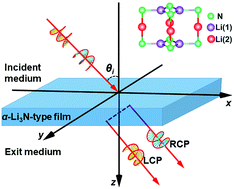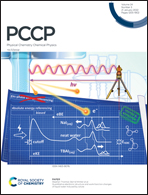Spin Hall effect of transmitted light through α-Li3N-type topological semimetals†
Abstract
The spin Hall effect of light occurring in topological semimetals provides unprecedented opportunities to exploit novel photonic properties and applications. In particular, pristine α-Li3N-type crystal has recently been predicted to be a type-I nodal-line semimetal based on density functional theory. Herein, the spin Hall effect of transmitted light through thin films of α-Li3N-type topological semimetals is investigated. We show that the prominent intense peak and dip emerging in the spectra of spin Hall shifts occur at the high-energy side of interband absorption of α-Li3N-type semimetals and show redshifts with increasing the incident angle or permittivity of the exit medium. In addition, type-I nodal-line semimetal under a compressive lattice strain is transformed into a type-II one such that the main intense peak and dip show blueshifts. Inversely, the tensile strain induces the formation of a triply degenerate nodal point in α-Li3N-type semimetals, causing the main intense peak and dip to show redshifts. Moreover, the influences of alloying and hole-doping in α-Li3N-type semimetals on the spin Hall effect of light are also discussed. Our findings may provide clear strategies to accurately engineer and detect the structural or phase change in topological materials.



 Please wait while we load your content...
Please wait while we load your content...